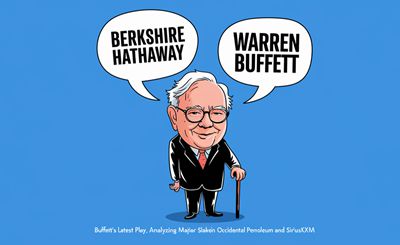Best Buy (BBY) Stock Surges: Analyzing the Bullish Signals Beyond the Numbers
In August 2024, Best Buy Co., Inc. (NYSE: BBY) experienced a significant surge in its stock price, driven by a robust Q2 earnings report that exceeded Wall Street expectations. This report aims to provide a comprehensive analysis of the bullish signals surrounding Best Buy’s stock, synthesizing information from various sources, critically evaluating data and expert opinions, and identifying underlying trends and market forces. Additionally, the report will discuss potential implications for investors and Wall Street analysts, offering actionable insights and recommendations.
Introduction
Earnings Performance and Market Reaction
Strong Q2 Earnings
Best Buy’s Q2 2025 earnings report revealed earnings per share (EPS) of $1.34, surpassing the anticipated $1.16, and revenues of $9.29 billion, slightly above the expected $9.24 billion (CNBC, 2024). Despite a year-over-year decline in net sales from $9.58 billion, the company’s net income increased to $291 million from $274 million a year earlier. This strong earnings performance led to a 15% surge in Best Buy’s stock price, reflecting investor optimism.
Improved Profit Margins
One of the key highlights of Best Buy’s earnings report was the improvement in profit margins. The company reported a 30 basis point increase in gross profit margins to 23.5% and a 50 basis point increase in operating profit margins to 4.1% (The Motley Fool, 2024). This improvement in profitability, despite declining sales, underscores Best Buy’s effective cost management and pricing strategies.
Raised Guidance
Best Buy raised its full-year adjusted EPS guidance to a range of $6.10 to $6.35, up from the previous range of $5.75 to $6.20 (CNBC, 2024). This upward revision in guidance further bolstered investor confidence, signaling the company’s optimism about sustaining profitability in the coming quarters.
Market Trends and Consumer Behavior
Shifts in Consumer Spending
Best Buy is navigating a challenging consumer environment characterized by high inflation and shifting spending behaviors post-COVID. The company reported a 2.3% decline in comparable sales, an improvement from the 6.2% decline a year prior (CNBC, 2024). While categories such as domestic tablets and computing saw 6% growth, declines in appliances, home theater, and gaming offset these gains.
Impact of Emerging Technologies
CEO Corie Barry highlighted the impact of artificial intelligence (AI) on tech demand, noting an increase in customers trading in old electronics for new devices (CNBC, 2024). Best Buy’s focus on AI-driven products and services positions the company to capitalize on emerging tech trends, potentially driving future growth.
Analyst Opinions and Stock Valuation
Mixed Analyst Views
Analysts have mixed views on Best Buy’s stock. Loop Capital raised its price target from $93.00 to $100.00, reflecting a bullish outlook, while Wedbush maintained a neutral rating with a target of $85.00 (MarketBeat, 2024). Bank of America remains cautious with an “underperform” rating, citing near-term pressures from a challenging discretionary environment (CNBC, 2024).
Valuation Metrics
Best Buy’s current valuation is estimated at $90 per share, aligning with its market price (Forbes, 2024). The stock’s price-to-earnings (P/E) ratio is approximately 16.3, with analysts predicting a long-term earnings growth rate of 10.7% (The Motley Fool, 2024). Despite revenue challenges, Best Buy’s strong return on equity (ROE) of 52.23% and return on assets (ROA) of 10.91% indicate efficient management and profitability (Wall Street Zen, 2024).
Strategic Initiatives and Future Outlook
Enhancing Customer Experience
Best Buy is implementing strategic initiatives to enhance customer experience and expand its services business. The company is investing in AI-driven products and services, aiming to drive future growth and improve customer satisfaction (MarketBeat, 2024).
Cost Management and Efficiency
The increase in EPS despite declining sales suggests improved cost management and efficiency. Best Buy’s ability to maintain a steady gross profit margin reflects effective pricing and inventory strategies, even in challenging market conditions (Stock Target Advisor, 2024).
Dividend Yield and Total Return
Best Buy offers a dividend yield of 4.3%, contributing to an estimated total return of 15% (The Motley Fool, 2024). This attractive dividend yield, combined with the company’s strong earnings growth prospects, makes Best Buy an appealing investment for income-focused investors.
Conflicting Viewpoints and Potential Risks
Bearish Concerns
Despite the bullish signals, some analysts remain cautious. Bank of America cites concerns about the removal of free installation and weakness in gaming, appliance, and home theater products (CNBC, 2024). These factors could temper gains in computing shares and pose risks to Best Buy’s overall performance.
Volatile Consumer Environment
The ongoing consumer demand challenges, influenced by high inflation and shifting spending behaviors, present risks to Best Buy’s growth prospects. The company’s ability to navigate this volatile environment and sustain profitability remains a key concern for investors.
Actionable Insights and Recommendations
Focus on Emerging Technologies
Investors should monitor Best Buy’s strategic initiatives in AI-driven products and services. The company’s focus on emerging technologies positions it to capitalize on future tech trends, potentially driving growth and profitability.
Evaluate Dividend Yield
Income-focused investors should consider Best Buy’s attractive dividend yield of 4.3%. This yield, combined with the company’s strong earnings growth prospects, offers a compelling investment opportunity.
Monitor Consumer Spending Trends
Investors should keep an eye on consumer spending trends and Best Buy’s performance in key categories such as computing and tablets. The company’s ability to adapt to shifting consumer behaviors and maintain growth in these categories will be crucial for its long-term success.
Assess Valuation and Analyst Ratings
Given the mixed analyst views, investors should carefully assess Best Buy’s valuation and consider the potential risks and rewards. The stock’s current valuation and P/E ratio suggest a balanced outlook, but ongoing market volatility and consumer challenges warrant a cautious approach.
Conclusion
Best Buy’s recent earnings report and subsequent stock surge indicate a bullish outlook, supported by strong earnings performance, improved profit margins, and strategic initiatives. However, challenges such as declining sales in certain categories and a volatile consumer environment necessitate a cautious yet optimistic approach for investors. By focusing on emerging technologies, evaluating dividend yield, monitoring consumer spending trends, and assessing valuation and analyst ratings, investors can make informed decisions and capitalize on Best Buy’s growth potential.
In summary, while Best Buy’s stock flashes bullish signals, a balanced and well-informed approach is essential for navigating the complexities of the current market environment.


